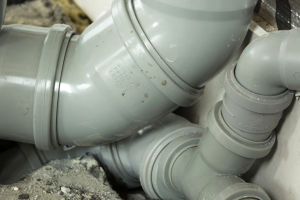 When a pipe bursts in your home or your yard, it must be fixed quickly to avoid further damage. There’s no way around it. Unfortunately, besides the sewer line repair itself, there are a number of things that can get in the way and make the job more difficult.
When a pipe bursts in your home or your yard, it must be fixed quickly to avoid further damage. There’s no way around it. Unfortunately, besides the sewer line repair itself, there are a number of things that can get in the way and make the job more difficult.
So what are some of these pesky problems? Here are a few hindrances:
Type of surface: Sewer lines and drains usually span long distances beneath a structure acting as a large network. Because of this, a leak or break can occur at any point throughout the system. Excavating large amounts of typical soil is difficult enough but if a pipe issue occurs under, say, a driveway or sidewalk, there will be much more work required to tear up and lift the cement.
Plant life: Besides the possibility of a layer of concrete covering the area over a damaged pipe, large foliage, specifically trees, have proven to be problematic. The majority of a tree’s root system grows around 12 to 36 inches below the soils surface, and can extend horizontally as much as two to three times the diameter of the tree’s canopy. Not only do these roots pose a threat to the pipes, but can make it all the more difficult to reach them for sewer line repair.
Standing structures: In line with the previous two factors, structures, in particular man-made structures, such as patios or decks can create a serious barrier against sewer repair. Besides the cost and effort put into tearing them down, most people will also need to pay to have them replaced.
According to a poll from Angie’s List, an estimated 73% of respondents said they would pay higher sewer line replacement costs if it would preserve their existing landscapes, patios, or other outdoor features. And considering that experts state that sewers should be replaced after around 40 years, there is plenty of time for structures to be erected.
Besides finding your yard full of flooding, the actual sewer line repair can be a huge inconvenience. But in the end, you’re going to have to fix it. So how can you make the process as painless as possible?


